1. Linguistic
1.1. Comparative Linguistics (1950s-80s)
1.1.1. Contrastive Analysis1960s, 1990s renewed
1.1.1.1. Lado, Stockwell, Bowen
1.1.1.2. Structuralism and Behaviorism influence
1.1.1.3. Compare L1 to L2 to predict probs
1.2. Functional/Pragmatic-external focus
1.2.1. Markedness Differential hypothesis mid1970s-mid1980s
1.2.1.1. Dinnsen & Eckman, Keenan & Comrie, Gass, Kellerman
1.2.1.2. Generative Linguistics?
1.2.2. Function to Form Mapping 80s-90s, some now
1.2.2.1. Prague school of linguistics, Halliday's school of linguistics, Selinker's interlanguage threory
1.2.2.2. Givon
1.2.2.3. Grammaticalization
1.2.3. Information organization early 1900s
1.2.3.1. Prague school of linguistics
1.2.3.2. Theoret. Influence- Functionalism
1.2.3.3. utterance structure
1.2.4. Form to Function Analysis 1920s, 1970s
1.2.4.1. Functionalism, Anthropological linguists, generativism, structuralism
1.2.4.2. Huebner, Halliday, Givon, Dittmar
1.2.5. Aspect hypothesis 1994
1.2.5.1. Functionalism, Innatism
1.2.5.2. Andersen and Shirai
1.2.6. Halliday's Systemic Linguistics
1.2.6.1. 7 Functions of language
1.3. Linguistic- Internal Focus
1.3.1. Principal of structure-dependency 1960 onward
1.3.1.1. Tesniere, Chomsky, Cook & Newson
1.3.1.2. Innatist (claim cross-linguistic perspective)
1.3.2. Universal Grammar 1970s
1.3.2.1. Chomsky
1.3.2.2. Innatists- reaction to behaviorism
1.3.3. Principals and parameters model -1980-onward
1.3.3.1. Chomsky, Lasnik
1.3.3.2. Innatist, generative linguistics
1.3.4. Monitor Model 1970s-early 80s
1.3.4.1. Krashen
1.3.4.2. Innatist, UG, LAD
1.3.5. Morpheme Studies 1970s
1.3.5.1. Brown, Dulay and Burt
1.3.5.2. Innatists, First lang. development studies
1.3.6. Error Analysis 1970s
1.3.6.1. Corder
1.3.6.2. Mentalism
2. Social
2.1. Socio-cultural theory 85-now
2.1.1. Vygotsky, Luria, Lantolf
2.1.2. Interaction as cause of learning. Social process
2.1.3. scaffolding
2.2. Zone of proximal development
2.2.1. Vygotsky
2.2.2. domain where learning can best take place. Not yet capable on own, but with scaffolding can learn.
2.3. Activity theory 60s 70s
2.3.1. Vygotsky, Leont'ev, Luria
2.3.2. Through activities in groups,teams=skill development
2.4. Ethnography of Communication 60s-70s
2.4.1. Hymes
2.4.2. Characteristics of speech events (telephone conversations, class lesson, business transaction,etc) studied. Appropriate interaction in events=communicative competence
2.5. Halliday's negotiation of meaning principle 80s
2.5.1. Halliday, Long, Gass
2.5.2. All communications a negotiation process-thru clarification, confirmation, recast, repetition, feedback.
2.6. Accommodation Theory 70s-80s
2.6.1. Giles, Taylor, Bourhis
2.6.2. The more effort speaker makes to accommodate listener, more effort listener makes to accommodate speaker.
2.7. Tarone's Approach 80s
2.7.1. Tarone
2.7.2. formal (careful) style vs. informal (vernacular)
2.8. Ellis's Approach or Variable Competence Model 80-90s
2.8.1. Ellis, Tarone, Widdowson
2.8.2. Variable nature of linguistic output and relation to discourse process. Primary process=unplanned discourse, secondary=planned
2.9. Acculturation Theory 78-now
2.9.1. Schumann, Phinney, Berry
2.9.2. Language acquisition related to adaptation to L2 culture. Affected by attitudes, social and psych factors
3. Psychological/Cognitive
3.1. Information Processing Model 70s-80s
3.1.1. McLaughlin
3.1.2. Input to controlled processing to automatic processing thru restructuring
3.2. Processability Model 1998-2000s
3.2.1. Pienemann
3.2.2. Concerns learnability and teachability of an L2 structures. 6 stages: words, word order, phrases etc.
3.3. Anderson's ACT Model 70s,onward
3.3.1. Declarative, procedural knowledge. Practice
3.3.2. Anderson
3.4. Teachability Hypothesis 80s-90s
3.4.1. Pienemann
3.4.2. Teach structures from the next stage for max effectiveness
3.5. Perceptual Saliency Approach 70s
3.5.1. Andersen
3.5.2. Beginning and end of sentences easier to remember, therefore easier for learners to acquire. PS predicts acquisition order.
3.6. Operating Principles 70s
3.6.1. Slobin
3.6.2. Data-driven rules of thumb to explain order of acquisition. ex: Pay attn. to ends of words. Avoid exceptions, and so on
3.7. Connectionism 80s
3.7.1. Rumelhart, Mccleland, Ellis, Schmidt
3.7.2. Brain builds links. Change input to patterns. Patterns strengthened by repetition. LL is the extraction of patterns resulting in rule-like behavior
